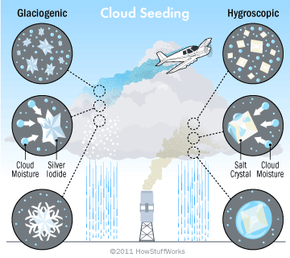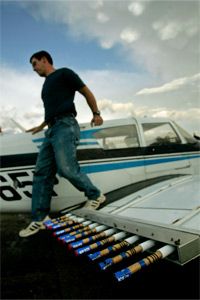A science fiction writer might imagine a future in which a government official -- the Minister of Weather Modification, perhaps -- dials up the day's weather for his country's citizens. A drought in the West? No problem, we'll just order a few gentle showers. A hurricane threatening the East Coast? Just stay calm, folks, we'll launch a small nuke to blast the storm apart.
They say truth is stranger than fiction, and such is the case with humans attempting to control the weather. But is weather manipulation technology close at hand? Will humanity one day be able to prevent extreme weather events?
Advertisement



